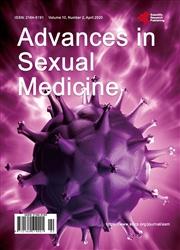Prevalence and Determinants of Modern Contraceptive Methods Use among Women of Reproductive Age (15 - 49 Years) in Rural Setting: A Case of Kishapu District, Shinyanga Region
引用次数: 5
Abstract
Background: Modern contraceptive use among women of reproductive age (15 - 49 years) is a public health priority in Tanzania. The national prevalence remains unacceptably low as 32%. Shinyanga region is one among the regions with lowest contraceptive prevalence rate (21%) and high unmet need for family planning (23%). Understanding factors contributing to its use may help to improve maternal and child health. This study aimed to assess the prevalence and determinants of modern contraceptive use among women of reproductive age. Methods: A community-based cross-sectional study was conducted in Kishapu district of Shinyanga region: A total of 602 women aged 15 - 49 years were interviewed using a standardized questionnaire. Data were analysed using SPSS version 20.0. Odds ratios with 95% confidence intervals for factors associated with use of modern contraceptives were estimated in multivariable logistic regression models. Results: The prevalence of modern contraceptive use was 42.7%. Being employed (OR 2.42, 95% CI: 1.13 - 5.18), formal educational level (OR 2.45, 95% CI: 1.38 - 4.35), couples communication (OR 2.44, 95% CI: 1.74 - 3.42) and availability of modern contraceptives (OR 1.94, 95% CI: 1.17 - 3.20) were significantly associated with current use of modern contraceptives. Husband disapproval was frequently reported as barrier for modern contraceptives in the study area. Conclusions: Numerous factors were associated with use of modern contraceptives. Husband disapproval was frequently reported as barrier for contraceptive use. Strategies to promote the importance of modern contraceptives use in the study area are warranted. District health office and concerned stakeholders should encourage male involvement for family planning.农村育龄妇女(15 - 49岁)现代避孕方法使用的流行率和决定因素:以新阳加省基沙普县为例
背景:育龄妇女(15 - 49岁)使用现代避孕药具是坦桑尼亚公共卫生的优先事项。全国患病率仍低至32%,令人无法接受。欣扬加地区是避孕普及率最低(21%)和计划生育需求未得到满足的地区之一(23%)。了解导致其使用的因素可能有助于改善孕产妇和儿童健康。本研究旨在评估育龄妇女使用现代避孕药具的流行程度和决定因素。方法:以社区为基础进行横断面研究,采用标准化问卷对602名15 - 49岁的妇女进行访谈。数据分析采用SPSS 20.0版本。在多变量logistic回归模型中估计与现代避孕药具使用相关因素的比值比(95%置信区间)。结果:现代避孕药具使用率为42.7%。就业(OR 2.42, 95% CI: 1.13 - 5.18)、正规教育水平(OR 2.45, 95% CI: 1.38 - 4.35)、夫妻沟通(OR 2.44, 95% CI: 1.74 - 3.42)和现代避孕药具的可获得性(OR 1.94, 95% CI: 1.17 - 3.20)与当前现代避孕药具的使用显著相关。在研究地区,丈夫的不赞成经常被报道为现代避孕药具的障碍。结论:许多因素与现代避孕药具的使用有关。丈夫的不赞成经常被报道为使用避孕药具的障碍。有必要采取战略,促进在研究地区使用现代避孕药具的重要性。区卫生办事处和有关利益攸关方应鼓励男性参与计划生育。
本文章由计算机程序翻译,如有差异,请以英文原文为准。
求助全文
约1分钟内获得全文
求助全文

 求助内容:
求助内容: 应助结果提醒方式:
应助结果提醒方式:


